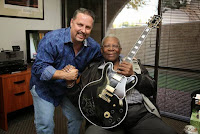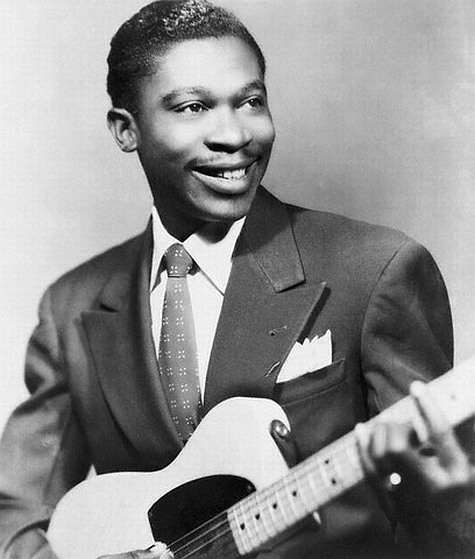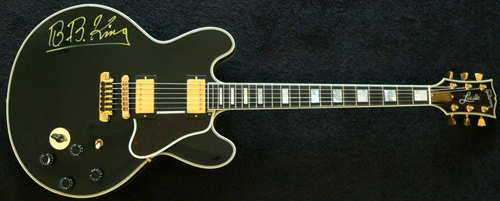 |
| From Rolling Stone Magazine |
There have been many Lucilles throughout the decades. The story of how Lucille came to be is rather interesting.
Riley. B. King started playing when he was only 12 years old.
He purchased his first instrument for $15.00. By 1943 he was working as a tractor driver on a farm and on the weekends he played guitar in churches with the Famous St. John's Quartet of Inverness, Mississippi.
By 1946 he left for Memphis Tennessee and moved in with bluesman Bukka White. By 1948 he returned to West Memphis Arkansas where he began to get a following after appearances on Sonny Boy Williamson’s radio show. The appearances turned into a brief career in radio.
He worked as a disc jockey with the pseudonym The Beale Street Blues Boy. This eventually was shortened to Blues Boy King. It was around this time King ran in to T-Bone Walker and heard him play electric guitar. King realized he had to get an electric guitar.
That following year Blues Boy King went to Los Angeles and was able to record with record producer Sam Phillips, who later founded Sun Records. King had horns, along with piano, drums and a second guitarist on his very first session.
B.B. then assembled his own band and called it the B.B. King review. By his own admission King never could play chords very well, so he relied on his husky voice and improvisation on the guitar.
In a video interview, B.B. King tells this story:
 |
| Original "Lucille" |
They would light that fuel, and that's what we used for heat. And generally, the people would dance around it, you know, never disturb this container. But this particular night, two guys start to fight and then one of them knocked the other one over on this container, and when they did, it spilled on the floor.
Now it was already burning, so when it spilled, it looked like a river of fire, and everybody ran for the front door, including yours truly.
When I got on the outside, then I realized that I'd left my guitar inside. I went back for it. The building was a wooden building, and it was burning so fast when I got my guitar, it started to collapse around me. So I almost lost my life trying to save the guitar.
 |
| BB King Super 400 |
That first guitar, the one in the burning building was a Gibson L-30 archtop. Since those days B.B. King has usually favored slim body Gibson ES-355 guitars.
Then in the early 1980’s when Gibson made a signature Lucille guitar for him.
 |
| BB King ES-355 |
As a rule, King made a few modifications to his ES-355’s, by having “Lucille” inlaid in the headstock. He also removed the vibrato bar. Since this was a semi-hollow guitar, King was concerned about feed back, so he would stuff rags into the f-holes.
On his signature Gibson model, B.B. King required it not to have any f-holes.
 |
| Super Lucille |
 |
| 80th Anniversary Lucille |
 |
| BB and Eric Dahl returns Lucille |
He said when he went to exam it, "The whole thing was covered in sweat. The strings were nasty, and then I flipped it over and looked at the headstock and it said, 'Prototype 1' in a white stamp. I assumed it meant this was one of the original 80th Birthday model Lucilles that B.B. King had approved."
 |
| From B.B. King's Funeral courtesy of Michael Wilson |









Tidak ada komentar:
Posting Komentar